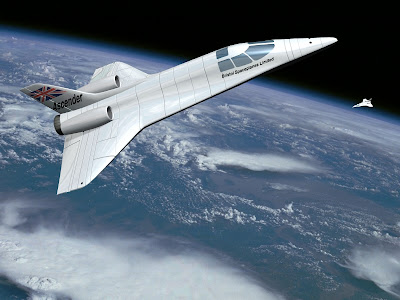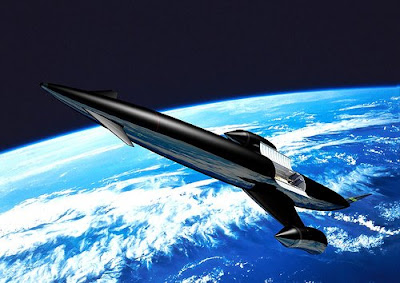

stormdot5
-
Posts
31 -
Joined
-
Last visited
Content Type
Profiles
Forums
Developer Articles
KSP2 Release Notes
Bug Reports
Posts posted by stormdot5
-
-



The goal of this challenge is to develop a capable reuseable SSTO spaceplane without using the turbojet engines or RAPIERs. Scoring is based around getting a better payload fraction. The flightplan to follow is to take off from the runway horizontally. Take a payload to either LKO (Low Kerbin Orbit) or KTO (Kerbisynchronous Transfer Orbit), then detach a useful payload. After that, safely de-orbit and land horizontally, as KSC if possible.
Ruley Bits
SSTO means no dropping things before reaching a stable orbit (periapsis above the atmosphere, 70km). After this you can ditch payload related items, but not core plane parts.
Spaceplane means the aircraft must be capable of horizontal take off with less than one thrust to weight ratio and horizontal landing. It can have greater than one TWR but must be able to take off with less if required.
Payload fraction is defined as mass of the payload / starting ship mass * 100 to give a percentage.
LKO is defined as 100km * 100km orbit.
KTO Is defined as Apoapsis at or above 2868.75km and periapsis above the atmosphere (70km, to prevent wild suborbital leaps). Reason to go to KTO? Double score.
Useful payload means a satellite, transfer stage, crew pod(maneuverable, not a floating coffin), etc. Whatever you can dream up, just things like plain fuel tanks need some architecture to allow them to be functional.
Screenshots for entry:
Clear view of vessel on runway
At flight events (e.g. rocket switchover)
View of orbit established (Ap/Pe visible)
View of payload (Don't need to see the payload complete it's objective but you've come this far...)
Landed, with resources tab open
Extra Fun
Bonus points don't affect score but can be achieved for extra credit;
+1 Packaged - Payload is carried in a cargo bay
+1 In safe hands - Have a kerbal pilot the flight
+1 Recycling - Recover a previous payload from orbit after first payload detachment
+1 Multipack - Multiple payloads able to be lofted to orbit in one go
+1 Explorer - Payload is equipped to travel to one of Kerbin's moons
+1 Steady climber - Plane has less than 1 TWR ratio until rocket ignition (Or Ions if you can get them to work)
+1 Electric Charge - Orbital insertion completed by Ion engines (Must deliver a reasonable proportion of orbital speed)
+1 Return to sender - Land on KSC Runway
+1 Tales from space - Entertaining story or video
+1 Rapid turnaround - Attach a new payload, refuel and go again without recovering the vessel
+1 Contingency - Crew and or Cargo have a survivable abort mode during atmospheric flight
+2 Voyager - Payload has an interplanetary departure stage
+2 Ace - Flight to and from orbit using only stock IVA instruments (Outside view allowed for on stable orbit maneuvers/payload working. Engine start to orbit and deorbit burn to touchdown completed in IVA). Video would be required for this.
-------------
-1 Acceptable risk - loss of a kerbal during the mission
-1 Scratched the paint - Damage to the payload during mission
-2 Safety not guaranteed - Loss of the payload
-2 One way ticket - Loss of the launch vehicle after payload detachment
Mods guidelines
NEAR/FAR/DRE allowed (encouraged)
Spaceplane+ allowed
Realchute allowed for drag chutes
I may add more instructions to cover a glaring rule loophole oversight or to improve the competition in the challenge if required.
Thanks for reading, hope you have fun designing and flying.
-
I've tried using 1.25m, 2.5m (which it should be), 2.75m (which matches the fuel tank size below before adding the fairing pieces), and 3m (as show in the screenshot with loads of extra volume) All have the same effect. I've got 1.25m and 2.5m unlocked in the tech tree. The parts appear without a size in the list and can be adjusted as Aethon says. The fairing pieces will wrap around any crazy shape I make. It just appears to be visually but not physically.
-
Tried out these suggestions with comical but not useful results;
Javascript is disabled. View full album
It definitely seems to be some coding that ignores radial parts or something rather than physically mapping where the parts are. Just need to trick it into realising the parts are inside the fairing.
-
I've been having a problem with a munar lander I'm trying to launch. I'm using FAR/DRE so I have procedural fairings installed to let me protect payloads. The problem is the radially attached parts are not getting aerodynamically shielded.
My Munar lander is sitting in a procedural fairing with two radial tanks with landing gear attached. In the VAB they show up as shielded. When I transition to the launchpad they become unshielded from the radial decouplers out. All central parts are correctly shielded.
I've tried oversizing the fairings, changing the number of fairing panels, adding parts to the lander to change it's size, different orientations of radial attachments etc. I researched and found that more than two fairing panels in the SPH can cause problems due to symmetry but this is in the VAB with two panels.
Also of note is when I decouple one of the side tanks on the pad, the other side becomes shielded again.
Javascript is disabled. View full album
Anyone have any experience with this/ideas?
-
Hi guys, I've been having trouble with runway rolls using non-stock landing gear.
I've been trying out the early game avoiding rocket launches. To do this I'm using FAR, spaceplane plus, and some firespitter landing gear. This lets me build some planes without having to go to space first for loads of science.
The issue is that when my planes get up to speed they veer off/tip and clip a wingtip resulting it rapid unplanned disassembly. I've experimented with different configurations but I can't work out the problem.
Here's a pic of an example plane I think should work fine:

It uses firespitter landing gear with skids at the back. The gear is mounted the the top of the fuselage for rigidity and low centre of mass. The tail skids provide some steering ability and give about 10 degrees resting angle of attack.
The takeoff run is generally problem free up until about 50m/s where it either tips sideways or rolls a wing into the ground. Trying to use the rudder to correct is ineffective, probably due to it lifting off around then. Roll controls have not much effect. I expect a no input liftoff about 55-65m/s.
I'm thinking it's to do with one wheel lifting and the drag from the other wheel spins it around but I can't work out how to avoid it.
It's possible to brute force it off the deck with thrust but then landing is impossible. Even a perfect landing touchdown results in the same result when brakes are applied or even if left to roll.
Any help would be greatly appreciated. This has been causing me problems for ages!
p.s. I experimented with a canard configuration aswell, although it was not as good to fly. It was able to roll safely at high speeds due to the front gear being held off the ground by the front lifting surfaces, and the centre of mass ahead of the rear gear. It was possible to brake to a stop but it was still very sensitive to misalignment and seemed to be more down to chance whether a wheel would dig in or not.

Slow SSTO
in KSP1 Challenges & Mission ideas
Posted
Here's my entry for demonstation of the concept using FAR/DRE. I'm sure this is easily beatable.
The craft is Linerunner
Weighing 19.092T on the runway Including the payload, Gooey probe, coming in at 725kg
Safely delivering this to orbit sets a payload ratio of 3.79% to 2 s.f.
The plane is realtively easy to fly, with some self stabilising tendencies. Gentle pitch up takeoff at 100m/s. SAS is used at the high angle of attack atmospheric ejection burn. Glide ratio is brilliant, can cross the runway threshold at 70m/s on approach. Maintains control to low, easy landing speeds.
Cost of plane (No payload or adapter) 32721
Value of fuel used in flight 990
Cost per ton of payload 1365.5/ton
Gooey probe is a low Munar orbit science experiment. +1 Explorer
Linerunner safely returns to KSC runway, +1 Return to sender
Total extras +2
Hope this encourages some entries.